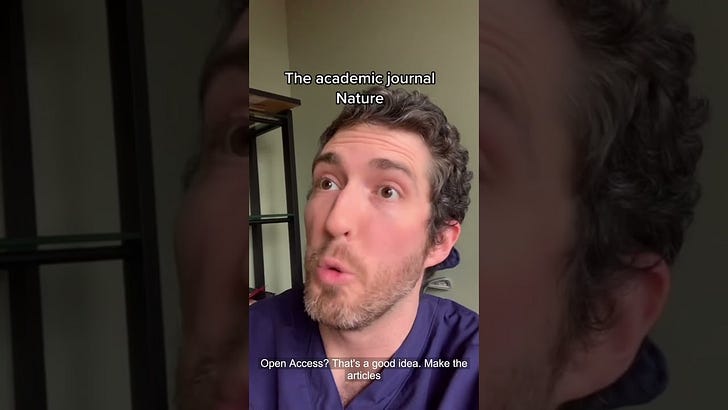A journal is just a Twitter feed
To reinvent scientific publishing, the technical problems are already solved
This was inspired by a tweet exchange with Michel Nivard:
There’s a lot of thinking going on about how to rework academic journals and the peer review process. It’s easy to succumb to featuritis. Can we automate publication using a pre-analysis plan? We need to be on the blockchain! Maybe we should build a special web platform for double-blind peer review?
Look at things differently. Here is a proposal for the minimum viable format for an academic journal.
I’ll talk in terms of Twitter. If you prefer, substitute your favourite open/decentralized alternative, like Mastodon. Twitter is just a concrete example.
A journal is just a Twitter feed
Journal article publications are tweets tagged #article. They contain at most four things:
Hashtags, including the #article hashtag.
The article title and authors, as text, in the form ‘A journal is just a Twitter feed’, by David Hugh-Jones (@hughjonesd). Arbitrary contact details go in brackets after author names. If you run out of characters, it’s fine to write “et al.”
A link to the article itself.
Optionally, a hash of the article’s file content, e.g.
SHA256:8c53730…This lets people check that the linked article hasn’t changed.
Subsequent tweets may discuss the article, add an abstract etc. But it’s a published article if and only if it has the #article tag. This leaves journal editors free to tweet about other stuff, advertise forthcoming special issues, forward cat pictures, et cetera.
It’s up to the journal where to store the linked articles. Most journals will want to provide a relatively durable URL. There are many options, such as Github. Or you can provide a URL containing a DOI. But you really can start a journal out of a Dropbox folder if you want.
Comments, updates and peer review
Post-publication comments in the journal are replies to the article tweet, also in the article format. Comments in a different journal may also be replies to the tweet, again in the article format. Of course, anyone may comment informally.
Updated articles are replies to the article tweet, and have the same title and authors as the original, along with #article and #updated hashtags. Withdrawn articles are replies to the article tweet with the #withdrawn hashtag and an optional explanation.
Journals can also publish drafts. These take the same format as articles, but with an #article-draft tag instead of #article.
Journals can organize peer review however they like. They may choose to make referee reports public as replies to an original article or draft. Referee reports include the #referee-report hashtag and a link to the report, along with an optional title/author text like ‘This will never work: referee report for “A journal is just a Twitter feed”’, by David Reinstein.
It’s fine to change the original linked file. For example, you might add a note saying “the authors retracted Figure 3, see https://twitter.com/status/123454321”. That will invalidate the hash, but this helps alert people that something has changed, and you can publish an updated version with the new hash.
(I think this is OK? An alternative would be that the original version of the article is sacrosanct, and the whole Twitter thread gives its status. But if so then readers may just not notice the reply saying “#updated, all our graphs were upside down”.)
Why so simple?
Thinking about the simplest possible thing makes it clear that the big problems aren’t technical but social. The technical problems are (1) file storage and (2) authentication, i.e. what counts as a real publication. Those are solved problems! The social problems are that we and our universities still obsess over publishing in journals run by firms whose business model resembles 2010 Toys R Us. We should work on those.
I hope this way of thinking is also liberating. Anyone can do this. You can start a journal in the next ten minutes: if you publish good work, I am sure people in the field will read you. This happens already! I read a lot of papers from a Twitter recommendation. We don’t need the whole paraphernalia of Impact Factors, ridiculous publication fees, and people paid to stuff your content into illegible two-column print formats. We need competition and experimentation in the space. Well, look, experimentation is easy.



